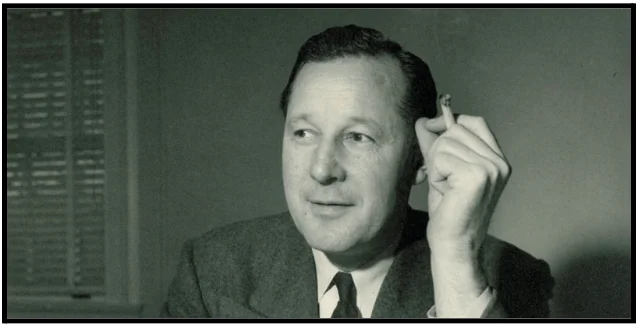One Idea. One Challenge. Once a Week.
“That voice! I can’t get it out of my head.”
~ Prince Eric
Think about a favorite song or poem of yours.
Imagine Gilbert Gottfried reading it out loud. In his iconic shrieking voice. And then consider listening to those same words spoken by the soothing Sir David Attenborough.
The effect is quite different!
Our voice gives meaning and life to our words. Used well, it adds emotion, excitement, and humor. It builds trust, connection, and engagement.
Used poorly, our voice can repel people. And turn quality content into a bore that puts people to sleep.
There are three foundational aspects to our speaking voice: volume, pace, and inflection. Deliberate practice improves them all.
#1: VOLUME
Abe Lincoln used to say that when he goes to see a speech, he wants it to look like the speaker is fighting bees.
Steve Ballmer from Microsoft epitomizes this.
An entire talk spent fighting bees would become obnoxious. Even a few seconds at Ballmer’s level is too much for most of us.
But the principle is clear: high volume conveys enthusiasm and confidence.
Contrast Ballmer with the relaxing contemplative sound of John Butler. Notice how we are drawn into what Butler says. As things get quieter, we tend to pay closer attention.
Space matters. A small room with a few people calls for a different volume than a keynote. In a large room, always be sure that everyone in the audience, in particular people in the back row, have no trouble hearing what’s happening on stage.
Variety is ideal. Consider conveying certain lines louder with enthusiasm while softening your voice at other times.
#2: PACE
Pace is how fast we talk.
Previously, we discussed The Runaway Train. How effective speakers take their time, while nervous speakers tend to talk too fast without pausing.
I’ve seen mediocre speeches become exceptional simply by improving pace. Speeding up adds excitement and anticipation. Slowing down emphasizes key ideas and feelings.
And most importantly, pausing. Much of the beauty lies in the silence. Mark Twain said that “no word was ever as effective as a rightly timed pause.”
Our model is Steve Jobs. Notice how he takes his time. The silence he creates gives the room space to be fully present in the moment he’s creating.
Speak. Pause. Breathe. Speak. We should each strive to build a unique cadence, mixing our natural rhythms with strategic silence.
#3: INFLECTION
Inflection is all the little changes we make in the sound waves of our voice.
It’s what distinguishes the phrase “you did it!!” from “you did it??” And it’s how we punch and highlight certain words, ideas, and feelings.
Oprah is the master of this. Listen to her for a moment. It’s hard to escape her grasp. She keeps us pulled in with her perfect inflection.
Sound without inflection is hypnotic and dull. This is why Ferris Bueller’s teacher is so comically boring.
Think about the last academic conference you attended. How many presenters lost their audience? Academics are famous for lacking inflection. There’s an idea that sounding dispassionate will elevate one’s status and make them seem professional.
The truth is, it just makes the speaker unappealing.
Conversations with friends have good inflection. Think about times when you’re comfortable hanging out. Laughing over drinks or around a campfire. You effortlessly add meaning to your words through your voice.
That’s the natural vocal style to bring with you on stage.
To dive deep on inflection, consider hiring a voice coach. There is a universe of nuance they can help speakers navigate: pitch, prosody (including upspeak), register, and tone — as well as related concepts like accent, articulation, dialect, pronunciation, and timbre.
***
In his invaluable book The Art of Public Speaking, Stephen Lucas writes:
A flat, listless, unchanging voice is as deadly to speechmaking as a flat, listless unchanging routine is to daily life.
The key takeaway: speakers should embrace vocal variety. This applies to volume, pacing, and inflection.
But we shouldn’t push too far. Overdoing variety will feel forced or awkward. The goal is to cultivate a natural voice that emphasizes our thoughts and feelings. And holds our audience’s attention.
While we will probably never sound as beautiful as Helen Mirren or Morgan Freeman, that’s okay. We can all learn to control our voice. And with enough practice, become as effective at speaking as Steve Jobs and Oprah. Which is even more exciting.
Today’s challenge will help us along this path.
*****
![]() IDEA
IDEA
Embrace vocal variety. Apply it to volume, pace, and inflection.
Read out loud for two minutes.
Pick a favorite speech, poem, song, book, or timely article. Focus on changing your volume, pace, and inflection. Try to show different emotions: excited, happy, calm, etc. Record into Otter as you read. Then listen to it and quickly self assess: how does your voice sound? What was effective? What did you like? What can you practice more?
Push yourself to do this challenge daily for a week. Note the growth you’ve achieved in less than 15 minutes total of practice!
BONUS: Take one extra minute and try Julian Treasure’s six vocal warm up exercises.
If you find this useful, please subscribe to our free weekly newsletter.




